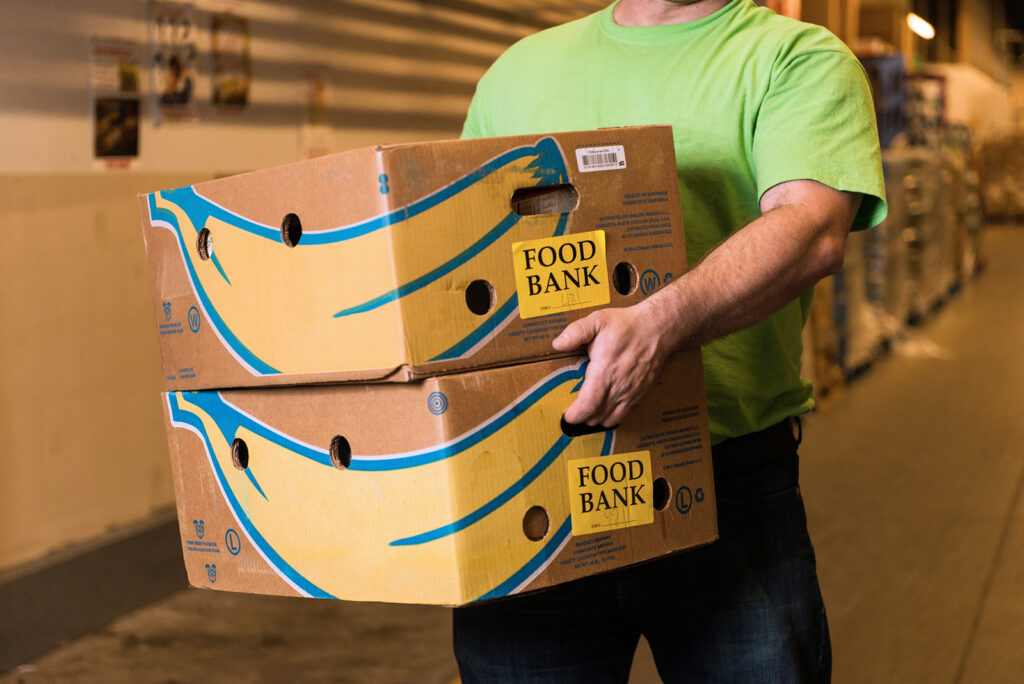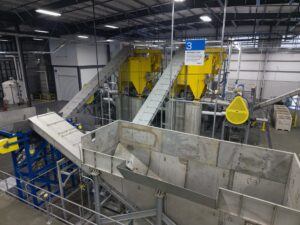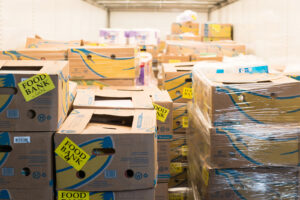September 23, 2024
In this blog: Common Obstacles to Food Donation | The Role of Measurement & Data | Solving Food Recovery with Innovative Partnerships | A People-First Approach to Solving Wasted Food
Summary: September is Hunger Action Month, an opportunity to explore the relationship between food insecurity and wasted food, and the solutions needed to solve both. This post outlines the obstacles to donation across different sectors of the food industry, and how to address them.
An estimated 44 million Americans are food insecure, yet nearly 63 million tons of food goes to waste annually, much of which is edible. According to an EPA report from 2021, the amount of wasted food “is sufficient to feed 154 million people per year, a far greater number than estimated by the USDA to be food insecure.” Nearly 52% of all wasted food comes from the food industry—farms, manufacturers, distributors, retailers, restaurants—before it can reach consumers.
It’s clear from the data that food recovery—redirecting more of the food produced to those who need it—is vital to solving the wasted food problem. So why does so much edible food get tossed in the landfill instead of being donated? In this post, we’ll take a look at the obstacles to donation across different sectors of the food industry, and how to address them.
Common Obstacles to Donation Across the Food Industry
Grocers and other consumer-facing businesses face several challenges when it comes to donating unsold, edible food, although those challenges are unique to each sector.
For restaurants, caterers, and other food service businesses, one of the main challenges is food safety: they deal primarily with prepared and hot food, and keeping that food in clean, temperature-stable condition to deliver it makes the logistics of donating their uneaten and unsold food much harder than for other sectors.
For manufacturers, one of the biggest challenges of donation is that their donation stream is not consistent. In an ideal world, every product a manufacturer produces would be sellable; it’s only when a product is not sellable but still edible that the manufacturer would have something to donate, e.g., a batch of peanut butter with a misprinted label. Manufacturers are often trying to offload large quantities of one type of food product that may or may not meet donation standards, and this lack of consistency can make it hard to build strong relationships with local food recovery networks.
Grocery retailers have the biggest opportunity to redirect their unsold food to local donation networks, and most stores already have a donation process in place. Yet the obstacles to donation are numerous:
- Store culture: From high staff turnover to disjointed program training, to stores dispersed over vast geographies, it can be difficult to create a culture of accountability, coordinate involvement with many different donation networks, and ensure consistent training.
- Lack of visibility into donation opportunities: Retailers are awash in store data, but they might not know what to do with it, or how to use it. They may be the strongest donator in their division, but is that because there are underlying issues with shrink? A better framework for looking at the data is needed to optimize store level donations.
- Fragmented regulations and recovery networks: Health regulations vary by city and state, resulting in different interpretations of the FDA Food Code. The complexity of the regulatory landscape, as well as the fragmented food recovery networks in different regions, prevents national retailers from developing uniform donation programs.
The Key to Improved Food Recovery: Measurement & Data
You can’t manage what you don’t measure. While we know how much food is being wasted across the food industry, it’s more difficult to know why the food was thrown away: Was it slightly blemished, making it less appealing to consumers? Was it still edible and thrown away by mistake due to employee error? Was a menu item less popular than expected and the ingredients weren’t needed? Did a customer cancel an order for pallets of a product? Finding the right data and contextualizing it to make it actionable is an industry-wide challenge that, if addressed, can strengthen food recovery efforts and prevent wasted food from reaching landfills.
At Divert, we’re bringing fresh data to our customers to help them optimize their management of unsold food. We do this in a few key ways:
- Divert collects site-specific data on every bin using our Radio-Frequency Identification (RFID) tracking platform. This information is then relayed back to customer sites so that managers and employees can track their wasted food volumes and identify areas of opportunity, such as refining food recovery programs or adjusting inventory purchases.
- We deploy our Field Teams to work hand-in-hand with customers to refine donation systems and processes.
- We coordinate with our customers’ food donation partners to strengthen communication channels and share best practices.
Divert customers like Safeway have seen up to a 20% increase in their store food recovery in just three months.

Case Study:
Safeway looked to Divert’s optimization solution to help strategize a better approach to food recovery. With proprietary technology and an experienced field team, Divert created a strategy tailored to Safeway’s operational needs, with remarkable results.
Solving Food Recovery Fragmentation through Innovative Partnerships
Bringing visibility to food recovery and reducing fragmentation will require strategic collaboration. That’s why Divert is partnering with organizations like Feeding America: to deliver fresh data insights to our customers, and strengthen food recovery networks across the U.S. Divert’s data on what food is being wasted in retail stores is part of the picture, while Feeding America’s data on what food retailers are donating is another part of the picture. Together, these two data points create a clearer, more actionable picture for retailers to optimize their sales and donations. Collaborative partnerships like this bring the industry one step closer to solving the nexus of social problems caused by wasted food, from food insecurity to climate change.
A People-First Approach to Solving Wasted Food
In the food industry, donations and organics recycling programs often work against each other. Since Divert’s founding, we’ve taken a people-first approach to solving wasted food by looking for the synergies between donation and recycling, and created solutions that optimize both.
Through our technology, data, and strategic partnerships, we’re able to give our customers the insights and support they need to strengthen their donation programs, scale food recovery work, and meet their ESG goals.
Since 2018, we’ve helped our customers rescue more than 14 million pounds of edible food (roughly 11.7 million meals) for the food insecure. In 2023 and 2024, Divert has earned the AgTech Breakthrough Award for Food Recovery Solution of the Year.
Learn More
See how Divert’s solutions are making an impact in the fight against food insecurity.



